
Frog Chorus
The week has been dry and sunny but with the clouds progressively becoming a more frequent feature. Increasingly the skies are becoming overcast and the azure blue of the dry season has been replaced by a blanket of grey. The sun manages to peep through for a while but then is lost once more behind an obscuring haze, only the faint outline of its orange disc visible to the naked eye.
The amphibian population is gathered and ready for the real rains to begin. There are more male frogs setting up territories at each location around the pond. The Savage’s Thin-fingered frog and the Marine Toads prefer the pond edge. The Banana Frogs and the Small-headed Frogs situate themselves on the vegetation floating on the water. A little higher up the Milky Frogs have taken up their positions on the upper surfaces of the leaves overhanging the water. Finally the Red-eyed Green Tree Frogs can be heard calling from nearer the tops of the vegetation. When the rains do arrive, with the typical early May deluges, the activity around the pond will increase exponentially. More species will arrive, particularly the ones that reproduce directly in the water. It is just a matter of time.

Red-eyed Green Tree Frog, (Agalychnis callidryas). Male. Calling.
Skipping Over Marked Metal
Butterflies exhibit a variety of dimorphisms. They may be sexually dimorphic, strongly or otherwise, males and females may look like completely different species. They maybe seasonally dimorphic, wet season forms differing from dry season forms. They may be geographically polymorphic with one species varying in size, color and markings over a wide geographical range to the point where you would once again think you were looking at totally different species.
One of the more commonly seen riodinids, or metalmark butterflies, in the forests of Bosque del Cabo is Metacharis victrix. I regularly see the fiery orange females but not so often the males which are much more of a deep brick red. They have the frustrating habit of perching on the underside of leaves so to capture the image you have to get on the ground, lie on your back and point the camera upwards.

Metacharis victrix. Male.
They are frequently found in bright understory light gaps. The larval food plant is any one of the Heisteria species of which, Heisteria accuminata, is very abundant in this area.
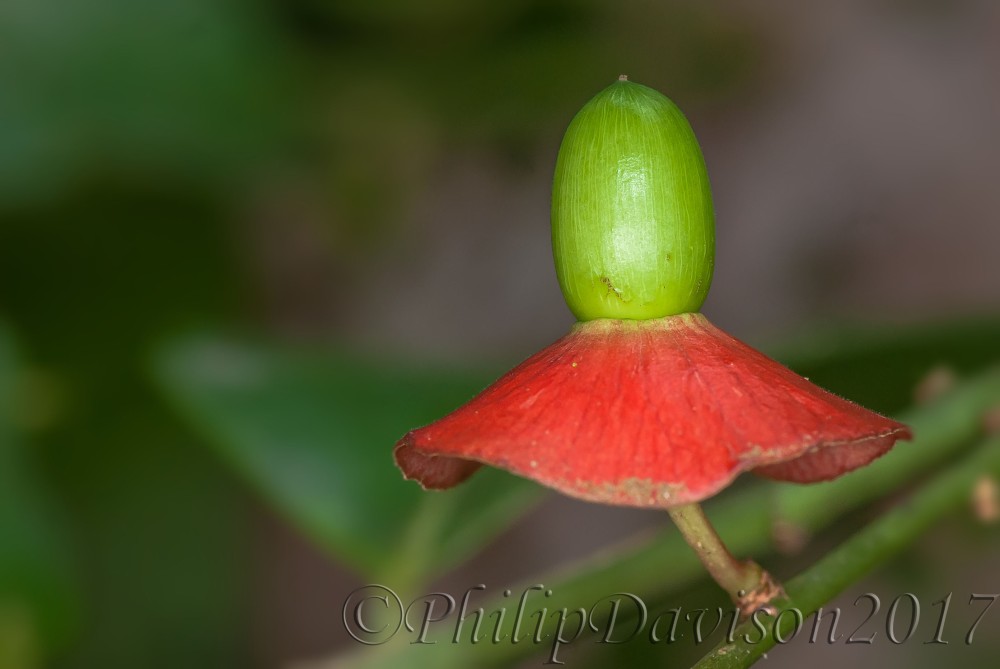
Heisteria accuminata. Fruit
The skippers are a difficult family of butterflies to identify too. A great many of them are very small, sometimes no bigger than an adult human fingernail. To add to the problem of identity, there are so many of them and they quite often they are muted shades of brown. It does take a certain level of expertise to identify them to species level.
Last week I had one land close to me and fortunately stay still. Skippers are prone to taking flight at the slightest disturbance and are also averse to the camera flash going off. This individual was the Perching Saliana (Saliana esperi). The earthy brown of the hindwing underside has a contrasting creamy flash. There are two pale windows in the dark half of the wing.
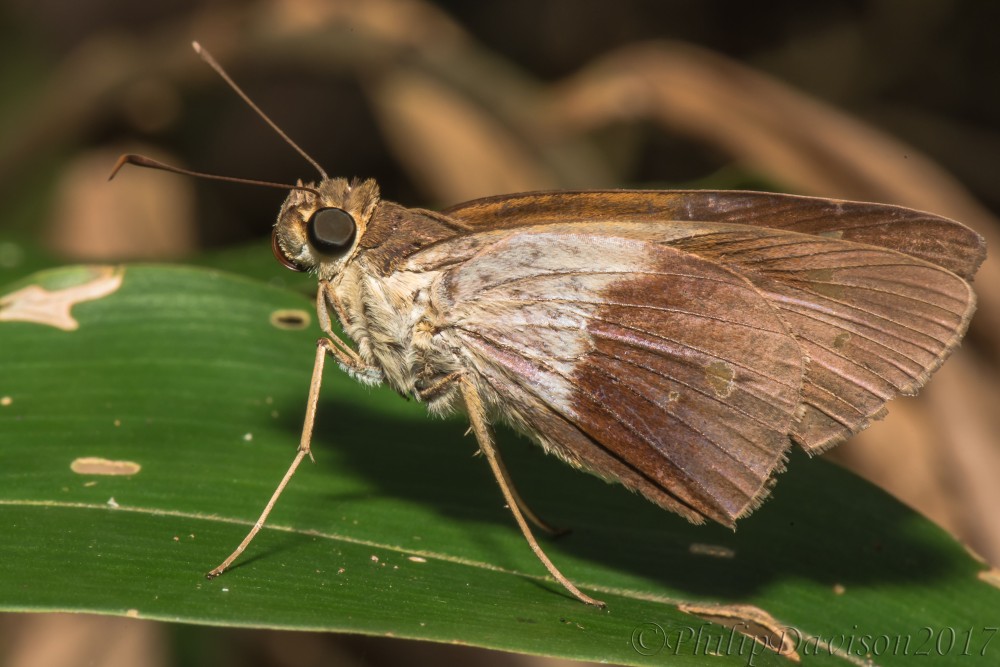
Perching Saliana, (Saliana esperi)
It’s a Mystery
As much as I would love to study moths as well as butterflies, time does not allow this luxury. There are up 14,000 species of butterfly and moth in Costa Rica, the majority being moths. Many of the moths we have no idea of their life histories. So when a moth does turn up that I can take a photograph of, if I cannot arrive at an identity then I do not fret over the fact, I just enjoy it for what it is, a beautiful thing to behold.

Unidentified Moth
Actually that holds true for many insects. Costa Rica has an estimated 365,000 named species of insects within its territory, that is 1,000 species for every day of the year, which would require exceptional identification skills. Identity to species level is best left in the hands of those who specialize in a particular group. I found a stinkbug sitting on a leaf that made a wonderful subject but I have not been able to name it to species level.

Unidentified Stinkbug
Philip Davison Is a Biologist, Writer and Photographer Based in Costa Rica

The transition from the wet into the dry season is normally marked by a variety of changes that are both easy to see and hear. So far those changes have not been that obvious for 2017. The unusually heavy rains during November and December last year would appear to have delayed, if not completely altered a lot of plant and animal behaviors. But now, some two months after expecting to see certain changes, they are beginning to take place.
There has been a late start to the flowering season for many trees. This week some of the trees that would have been expected to flower in December are now flowering in February. One notable example is the Ajo Tree, (Caryocar costarincensis). Its bright lemon yellow blooms can now be seen littering the forest floor on many of the trails. Take a trip up into the tree tops on the canopy platform and you will find many species of tree crowns covered in flowers. This is turn attracts many butterflies and they can be seen flying from flower to flower, tree to tree, all around the sunlit forest canopy.

Ajo Tree, (Caryocar costaricensis). Flowers.
Rain forests in general can be windless areas. The forests of the Osa Peninsula experience very little wind except when a heavy rain approaches pushing a pocket of air in front of it. The plants therefore have to rely for the most part on animals to carry out both pollination and seed dispersal. Bats are very important pollinators and seed dispersers. Bats prefer musky odors to sweet odors. This results in the plants emitting various scents that humans would not be expecting, being used to the more fragrant sweet smell of flowers. The bats however are attracted by the scent of garlic. The nectar feeding bats have a long muzzle and a long sticky tongue. While they are feeding on the nectar, the long anthers of the flower dust pollen over the head and shoulders of the bat which then flies off to visit another flower transferring the pollen and effecting pollination.
In subtle contrast to the green of the hedgerow vegetation are the strong purples of the Morning Glory, (Ipomea) which are currently flowering. This is a vine which wends its way through the hedges. The purple color is attractive to insects. The flowers prefer the full sun despite the name “Morning Glory” which refers to the flowers unfurling at first light of dawn.

Morning Glory, (Ipomoea sp)
The butterflies are starting to be seen in greater numbers but the levels fall a long way short of what would be expected at this time of year. The height of the butterfly season is between February and March but so far the visible populations, particularly of some species, are noticeably down.
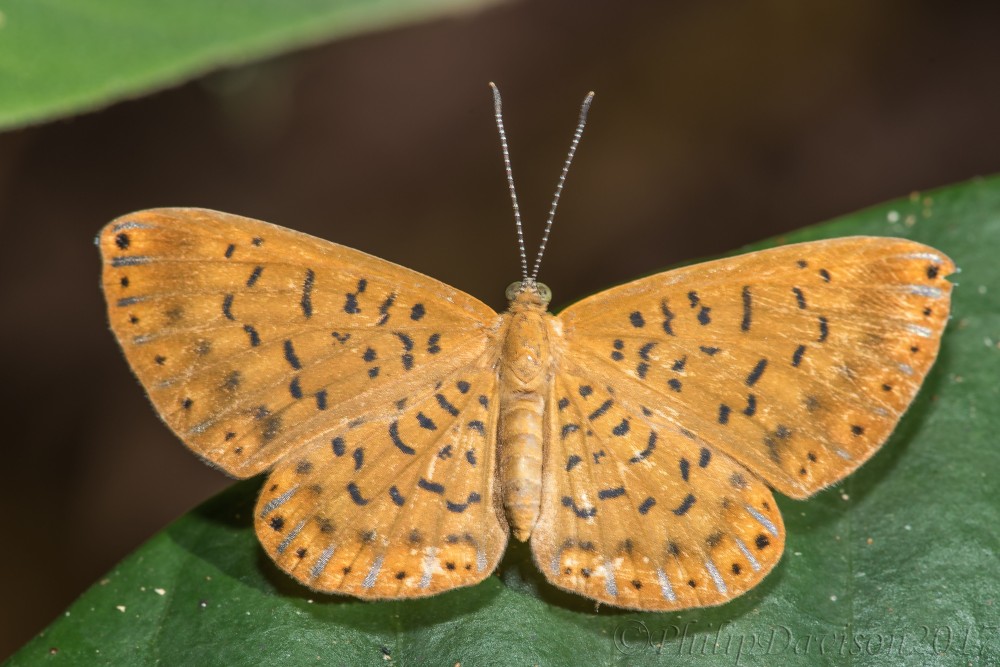
Metacharis victrix
At night the number of amphibians is starting to diminish. For some time now the number of species has reduced to 4 or 5 but the number of individuals of each species has dwindled to only one or two hopeful males calling for a mate. It is highly unlikely that there will be a response at this time of year. The Savage’s Thin-fingered Frogs, (Leptodactylus savagei), are increasing slightly in numbers around the pond. As the area continues to dry the pond is the only damp refuge and these large amphibians start to congregate around the pond edge sometimes entering the water where they can be found floating.
Floral Descent
Whereas many of the plants have been slow to flower, some of the orchids have not.. To see the orchids you generally need to up in the forest canopy, 88% of the Costa Rican orchids are epiphytic, they are up at the top of the trees. But occasionally you may be lucky to see some that have found a suitable location nearer to the ground. When not in bloom it is easy to miss them as many orchids have small insignificant flowers, but not all, others when in flower can have quite a showy display. Orchidaceae is a very species rich family of flowering plants rivalled only by the Asteraceae or daisy family in terms of numbers. Being so diverse makes them hard to identify. Many people admire them for their aesthetic, if sometimes subtle, beauty. They are therefore a group of greater interest to orchid specialists in terms of identification and geographical distribution. Equaled by the diversity of species and form of the flowers are the number of ways in which orchids become pollinated. Some of them have evolved means of attracting pollinators that would seem to be, on first reading, the stuff purely of science fiction.
Around the gardens and forests there are orchids that are slightly more obvious. Growing on some of the garden trees as epiphytes are the white-flowered, night-perfumed Lady of the Night, (Brassavola nodosa). At night the white flowers give off a heavy sweet perfume that attracts in hawkmoths. The moths hover in front of the flower and using the long proboscis probe for nectar. While doing so they become covered in pollen which is then transferred to the next flower they visit. Not too far away growing in the borders are the Bamboo Orchids, (Arundina graminifolia). This is a terrestrial orchid native to south east Asia. It is however widely grown in Costa Rican gardens. The purple bee pollinated blooms are born on long thin stems that resemble a bamboo stem.
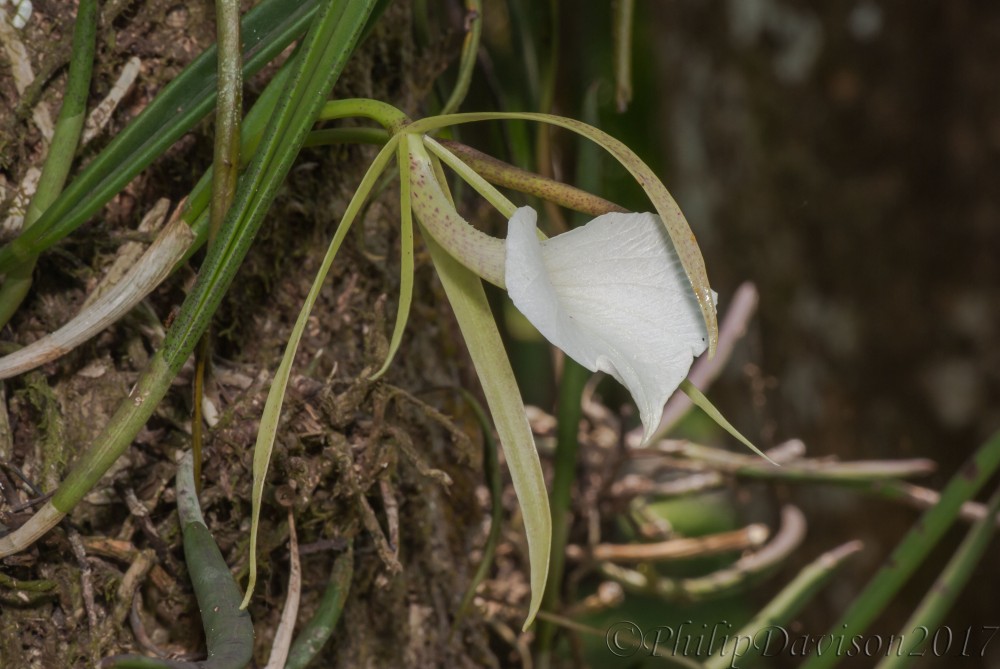
Lady of the Night, (Brassavola nodosa)
On the forest trails growing low down and in locations near to water you may find, (Stanhopea cirrhata). Stanhopea species emit an scent that attracts certain species of orchid bee. The males gather the scent which they mix with other plant volatiles to produce their own perfumes. The structure of the Stanhopea orchid is such that while the bee is gathering the scent a pollen package is attached to the bee which unwittingly transfers it to the next orchid it visits.
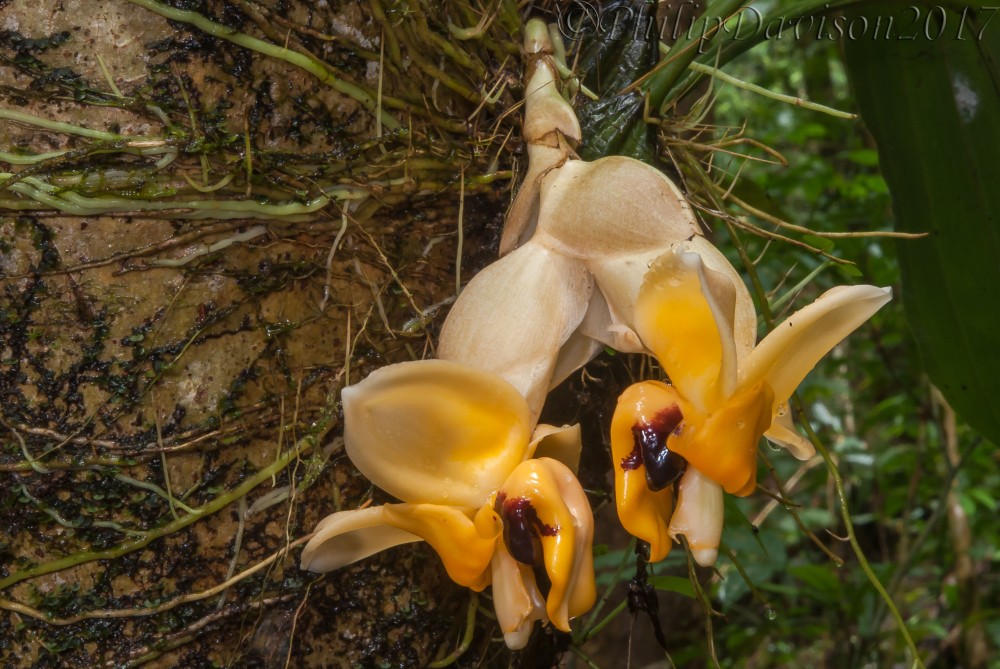
Stanhopea cirrhata
There are some orchids whose flowers are as green as their leaves. Numbering amongst them is the Vanilla Orchid, (Vanilla planifolia). In the wild Vanilla orchids are pollinated by orchid bees but when commercially grown and pollinated by hand. Growing on the sides of trees are some of the green flowered Epidendrum Orchids. There are about 160 species of Epidendrum in Costa Rica which makes them a little difficult to identify.
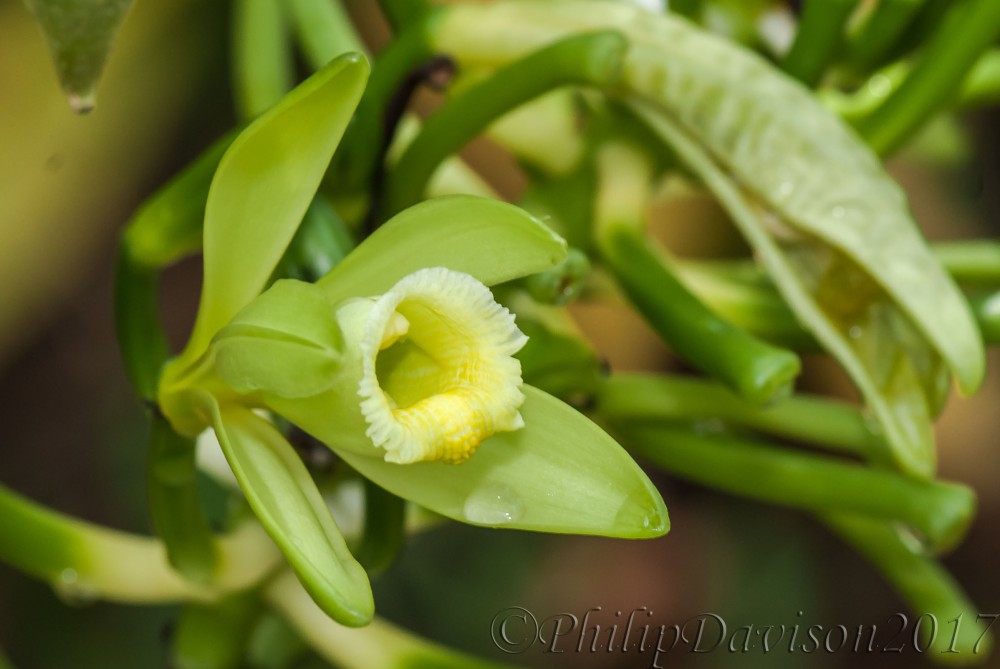
Vanilla Orchid, (Vanilla planifolia)
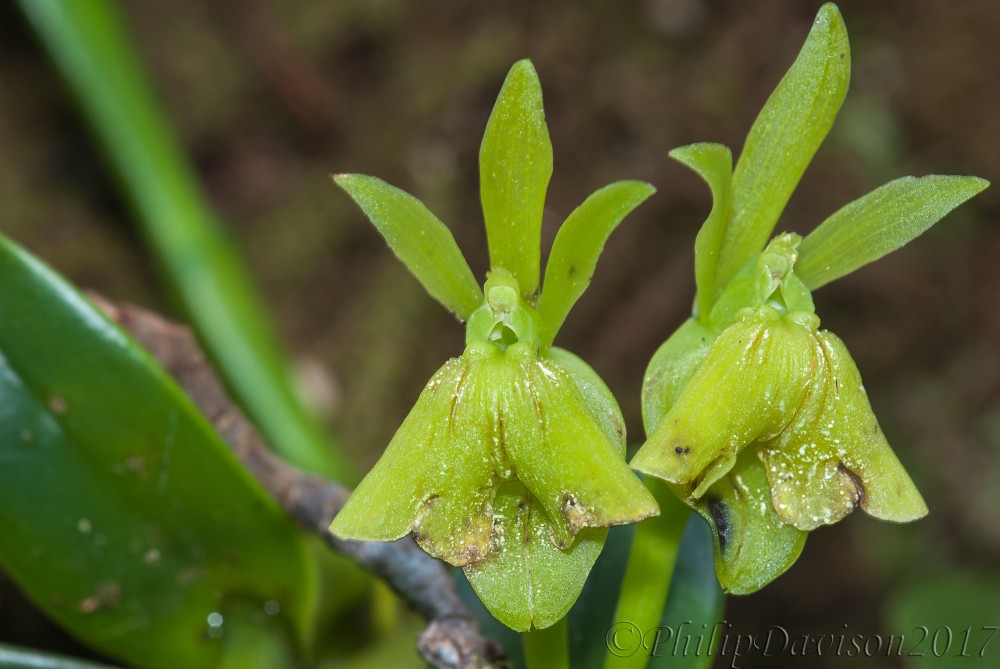
Epidendrum sp
Dragons and Damsels
If you spend enough time by any body of water around the grounds then you are likely to see some of the Odonates; dragonflies and damselflies. The dragonflies can more commonly be found still bodies of water such as the pond whereas the damselflies seem to frequent areas closer to running water such as the creek. They can also be seen in the gardens and throughout the forest too. You can tell a dragon from a damsel when they land as the dragonflies perch with the wings out to the sides whereas the damselflies perch with the wings folded together over the back.
You have to have patience to photograph dragon and damselflies. They react to the slightest movement near them by taking to the air. They do have favored perches though so if you set the camera up on a tripod or simply rest in a comfortable position, camera in hand, they well almost always return in short time and alight at the place from which they took off.
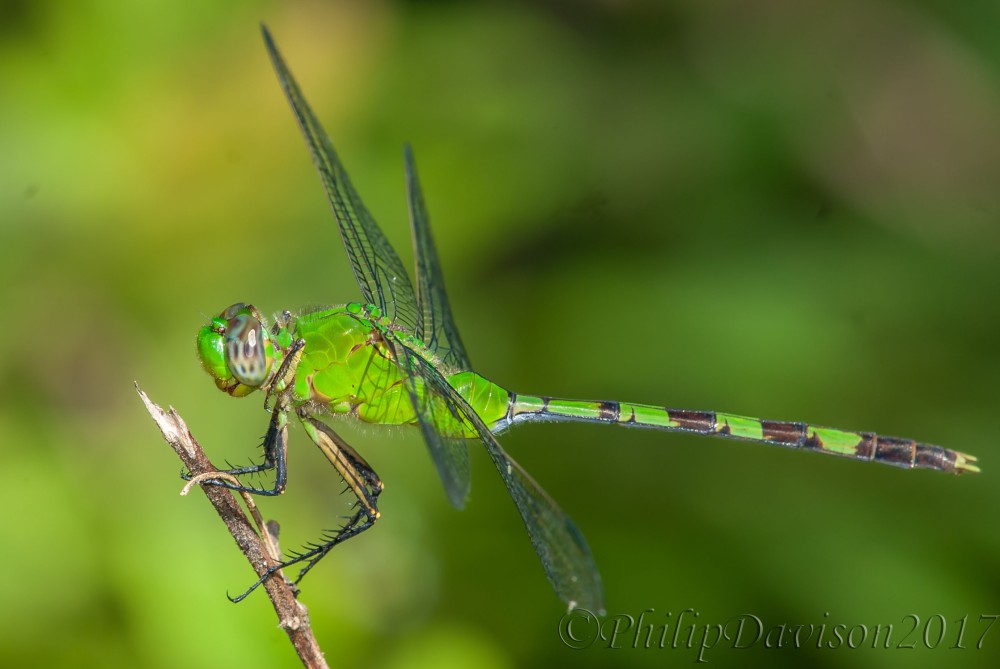
Great Pondhawk, (Erythemis vesiculosa)

Red-mantled Dragonlet, (Erythrodiplax fervida)
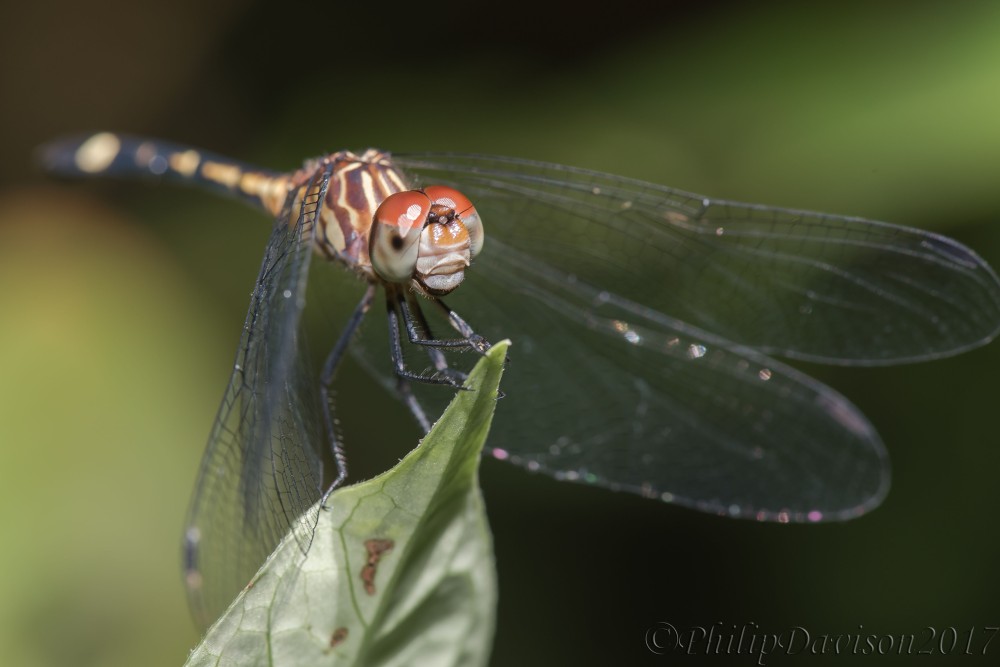
Three-striped Dasher, (Micrathyria didyma)
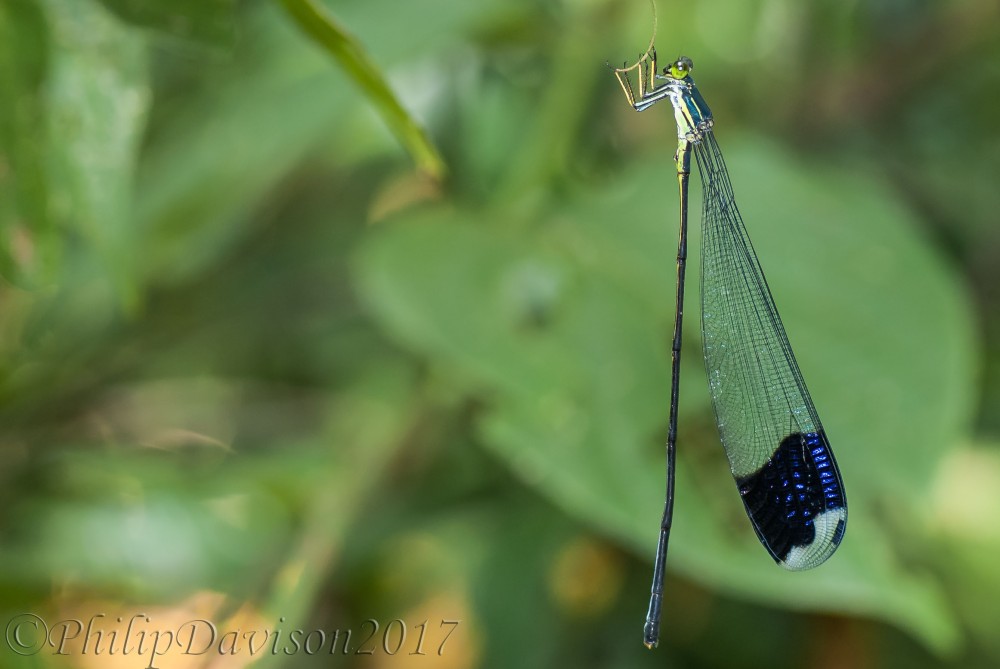
Helicopter Damselfly, (Megaloprepus caerulatus)
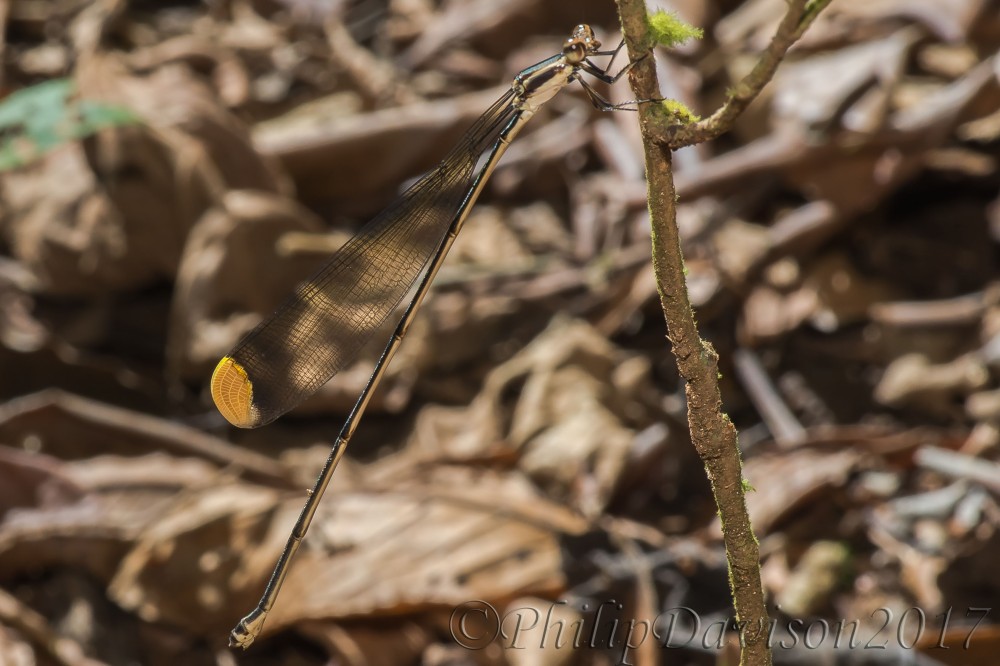
Ornate Helicopter Damselfly, (Mecisogaster ornata)
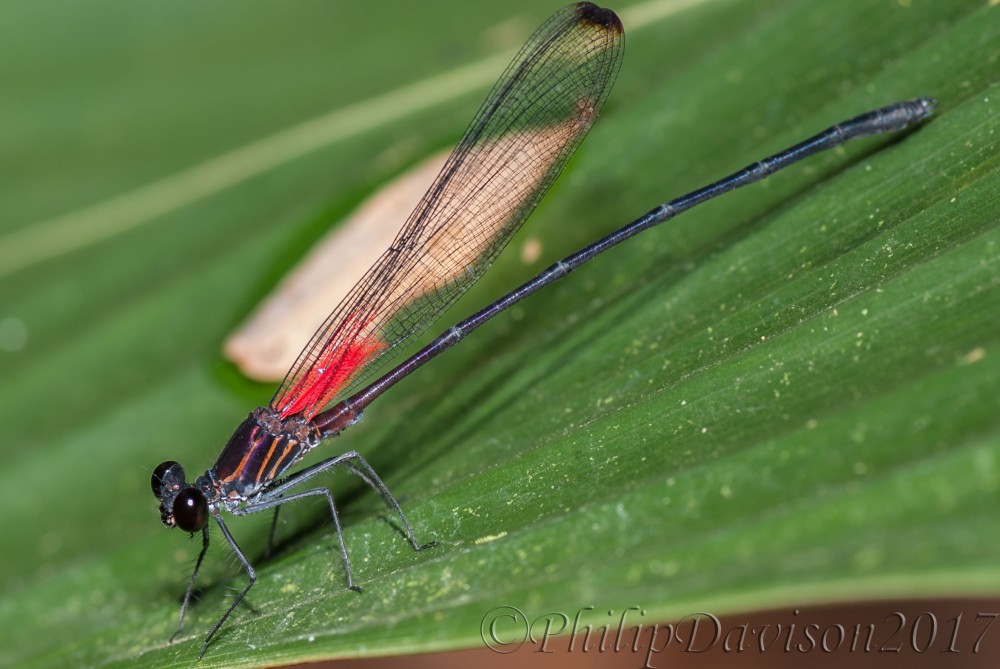
Hetaerina orissa
Philip Davison is a Biologist, Writer and Photographer Based in Costa Rica



















